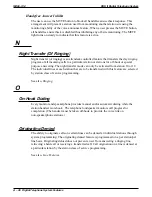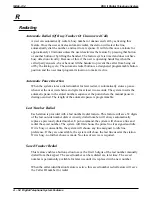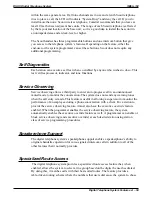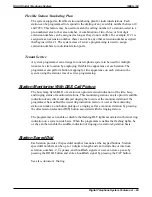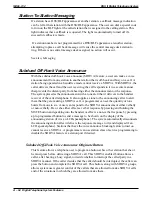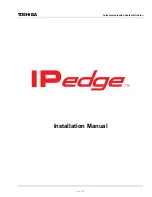
a line group after comparing the dialed number with entries that are contained in an
office code table, an area code table, and four special area code look-up tables.
The specialized route access operates in the following manner: When the caller presses
INTERCOM and dials 9 or presses a preprogrammed button, the system returns a special
dial tone. The caller then has 10 seconds in which to dial some digits; otherwise, the
telephone will return to its idle state. Once a caller begins to dial digits, he or she has a
certain period of time in which to dial each new digit. The system programmer selects
this time-out period through programming. After the caller has stopped dialing digits and
the end of the time-out period has occurred, the system analyzes the dialed digits and
routes the call by following the table-driven routing scheme depending upon how the
programmer has arranged the system.
The system routes calls based on comparison matches between the dialed number and the
entries that it finds in either an office code table, an area code table, or four special tables
for selected area codes. These tables contain 1000 entries from 000 to 999 and the
programmer can assign one line group to each entry; therefore, a routing match is always
possible.
The system matches dialed digits with table entries in the following manner:
•
If the first digit that the caller dials is not a 1 or a 0, and if he or she dials less than
10 digits (such as : nnn-nnnn), the system evaluates the first three digits as an office
code, searches for the office code in the office code table, and finds a line group.
•
If the first digit is either a 1 or a 0 (such as: n-nnn-nnnn), the system ignores the
first digit and evaluates the next three digits as an office code, searches for the
office code in the office code table, and finds a line group,
•
If the first digit that the caller dials is neither a 1 nor a 0, and if he or she dials 10
digits or more (such as nnn-nnn-nnnn), the system evaluates the first three digits as
an area code and the following three digits as an office code.
•
If the first digit that the caller dials is either a 1 or a 0 (such as n-nnn-nnn-nnnn),
the system ignores the first digit, evaluates the next three digits as an area code, and
evaluates the following three digits as an office code.
•
After digit evaluation the system routes the call as per the following discussion: If
there is a special table that matches the dialed area code, the system searches that
table for the dialed office code and finds a line group. If there is not a special table
for that area code, the system just searches the area code table for it and finds a line
group.
IMI66–132
DSU II Digital Telephone System
A – 60 Digital Telephone System Features
Summary of Contents for DSU II
Page 31: ......



